18 Wild Animals in Myanmar [Wildlife in Myanmar]
Want to know more about the wildlife in Myanmar?
Discover 18 wild animals in Myanmar in this post, as well as interesting facts about them. 🇲🇲
Learn All About Burmese Animals
Ready to learn all about Burmese animals?
I’ve always been fascinated by animals, and by how they can be so different from one country to another. In this guide, we’ll focus on the many animals Myanmar has on the land, in the sky, and underwater.
I’ve split the guide into 6 categories:
- Native animals from Myanmar
- Endangered animals of Myanmar
- What is the Myanmar national animal?
- How many animals native to Myanmar?
- Which animal is important in Myanmar?
- What rare animals can we find in Myanmar?
Let’s dive in right away with our first category!
Native Animals from Myanmar
Myanmar, also known as Burma, is an Asian country located in the southeastern part of the continent. It is the largest country in Mainland Southeast Asia, has about 54 million inhabitants, and used to be a British colony after multiple conflicts and wars. It is bordered by China, Bangladesh, India, Laos, and Thailand, and although its largest city is Yangon, its capital city is Naypyidaw, which counts more than 924,000 inhabitants.
An interesting part of the country that I wanted to tackle is its wildlife. In light of that, I have listed the best of it, and I hope you will love learning what animals live in Myanmar.
Here’s the Myanmar animals list.
1. Gaur
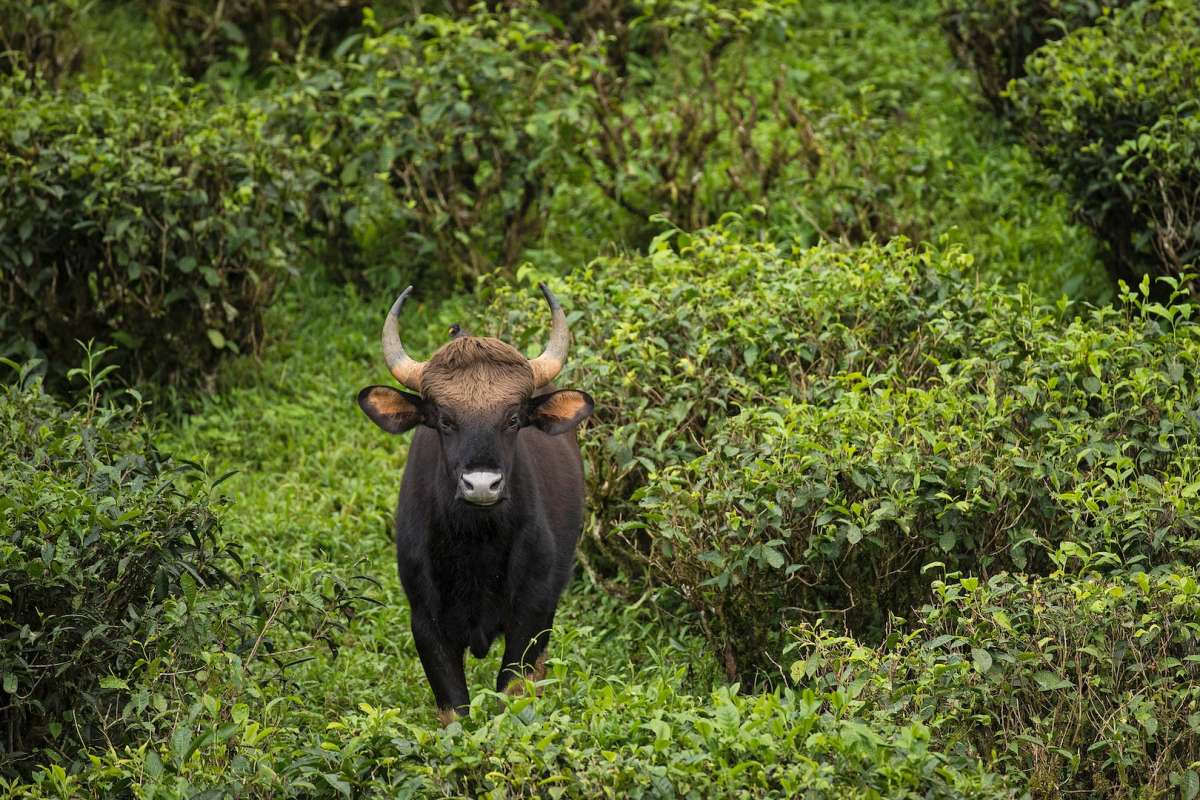
- Name: Gaur
- Scientific name: Bos gaurus
- Conservation status:
The gaur, also known as the Indian bison, is the largest species of bovid in the world. Particularly bulky, especially males, it has declined by more than 70 percent within only 3 generations, and is extirpated from Bangladesh and Sri Lanka.
Although more than 21,000 mature individuals remain, the serious decline of the gaur’s population is the reason why it is considered vulnerable to extinction. In well-protected areas, its numbers are either stable or growing.
2. Bharal
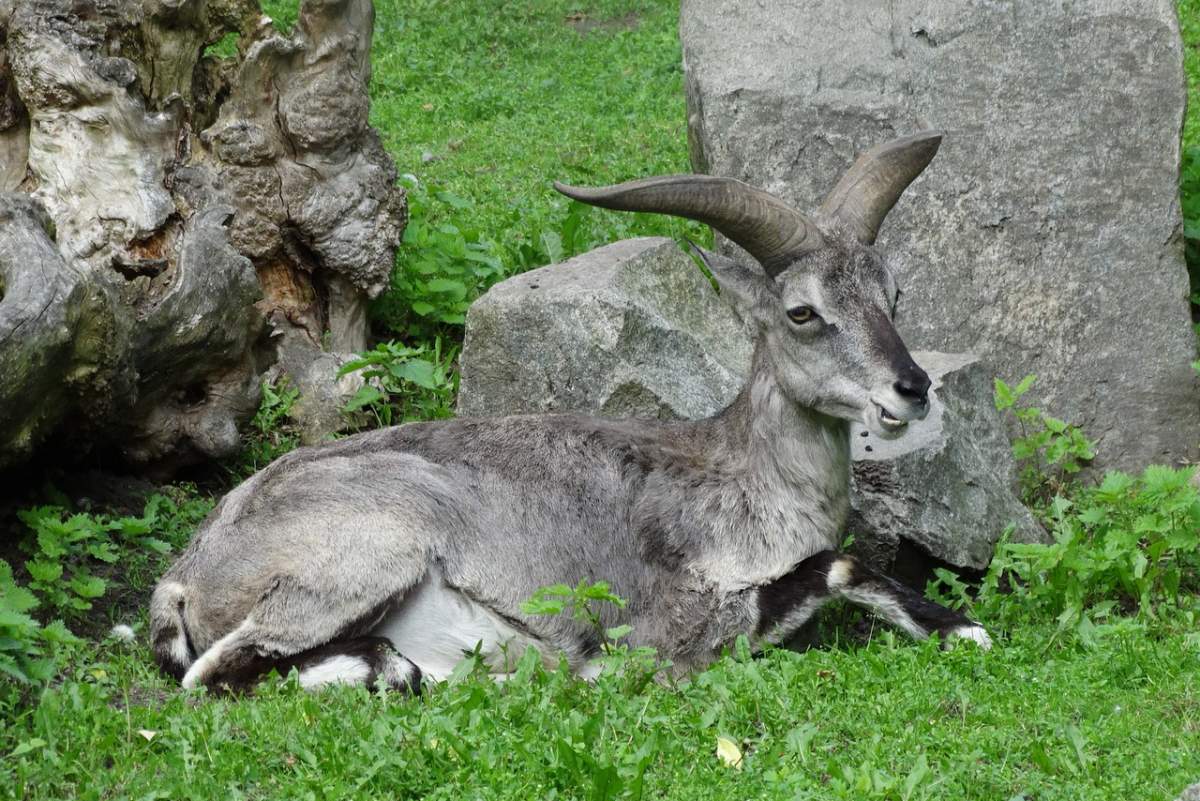
- Name: Bharal
- Scientific name: Pseudois nayaur
- Conservation status:
The bharal, also known as the blue sheep, is a species of caprine native to the high altitudes of the Himalayas and introduced to other countries such as Myanmar, Bhutan, and Pakistan. Its largest population is located in the Helan Mountains of Inner Mongolia, with more than 30,000 individuals.
This goat is one of the main targets of the snow leopard within its range, but it does not occur in Myanmar.
3. Asian golden cat
- Name: Asian golden cat
- Scientific name: Catopuma temminckii
- Conservation status:
The Asian golden cat, also known as the Asiatic golden cat or Temmincks’s cat, is a medium-sized species of wild cat native to Southeast Asia, China, and the northeastern parts of the Indian subcontinent. It is listed as near threatened, mainly because of habitat destruction and poaching.
In Myanmar, it can be found in Hkakaborazi National Park and is heavily hunted for its fur, despite being protected in the country.
4. Dhole
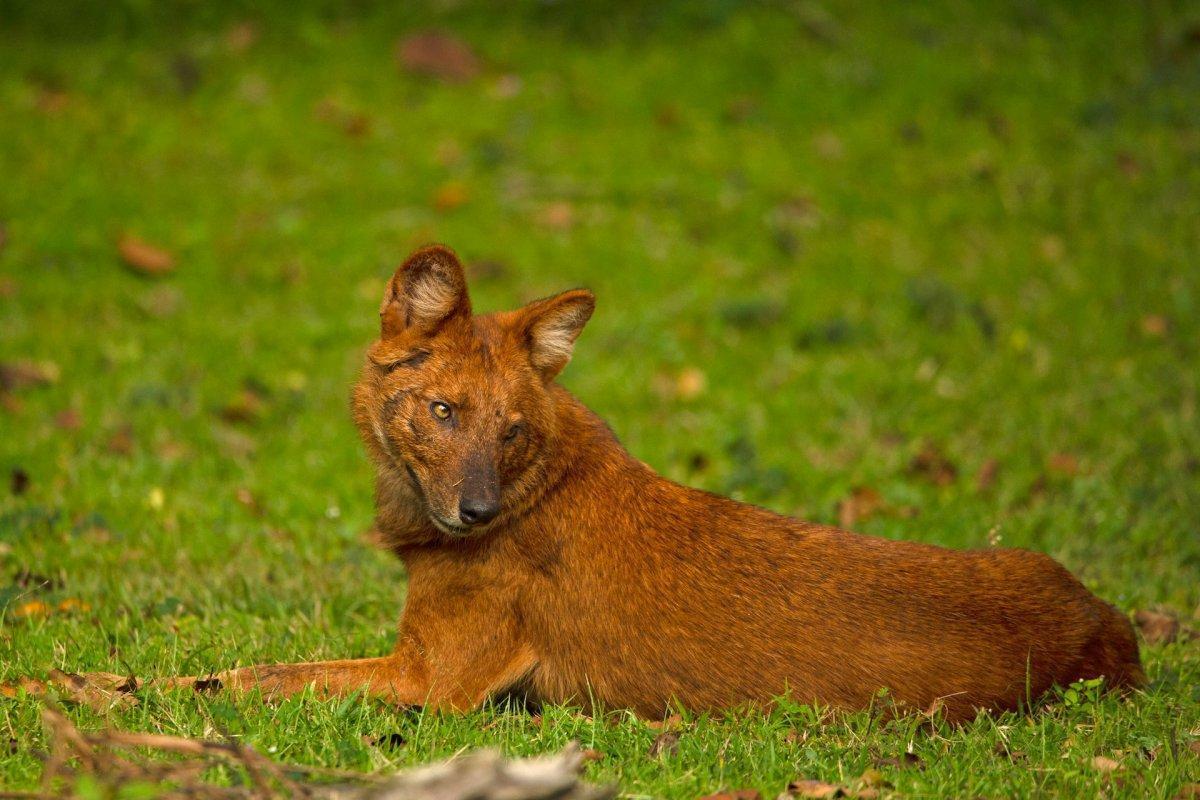
- Name: Dhole
- Scientific name: Cuon alpinus
- Conservation status:
The dhole, also known as the Indian wild dog, the whistling dog, the mountain wolf, or the red dog, is a species of canid native to central, southern, southeastern, and eastern Asia. It is highly social and lives in groups of about 12 to 40 individuals without strict hierarchy.
It lives in forested areas in the alpine zones of Myanmar, as well as plains regions. It can be found in several protected areas of the country, and mainly preys on thamins.
5. Thamin
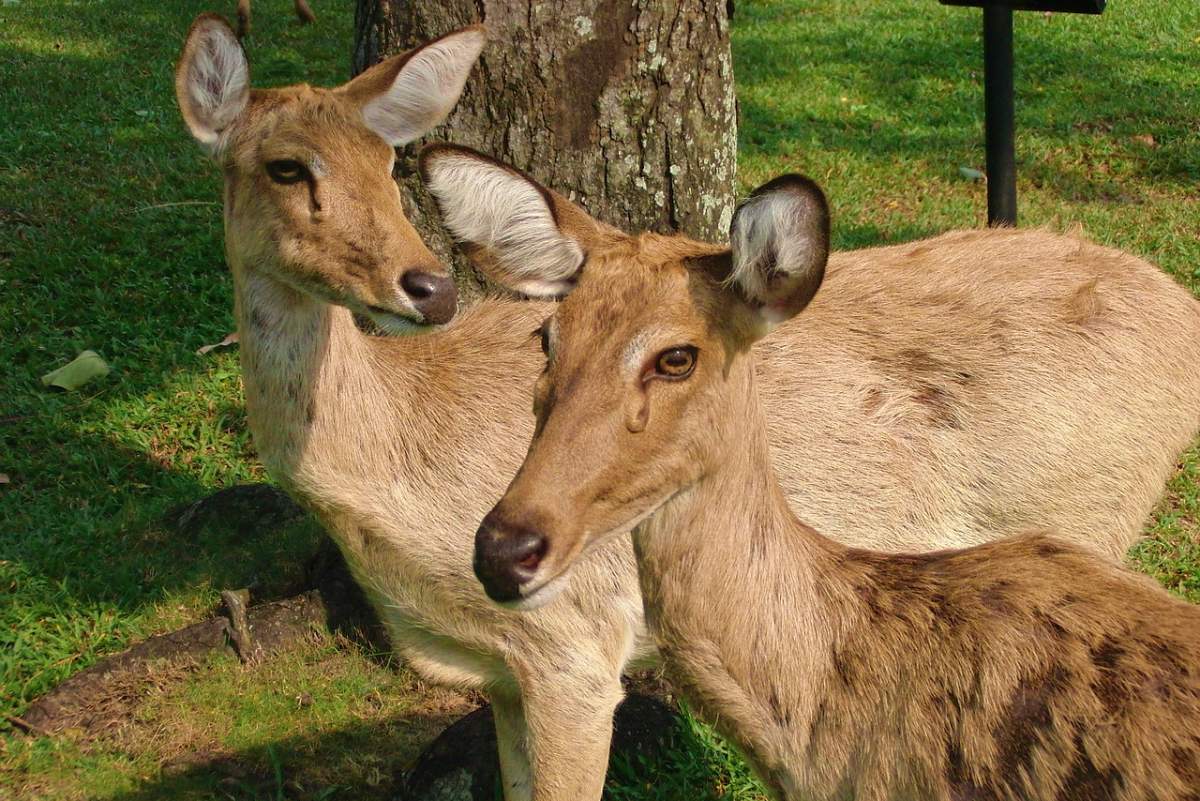
- Name: Thamin
- Scientific name: Rucervus eldii
- Conservation status:
Speaking of which, the thamin, also known as Eld’s deer or the brow-antlered deer, is a species of deer endemic to southern Asia. Because of game hunting for its impressive antlers and hides, overhunting, and agricultural expansion, the thamin is seriously threatened, and considered endangered.
In Myanmar, it lives in the central plains, and Chatthin Wildlife Sanctuary is home to the largest population of thamins in the world.
6. Sun bear
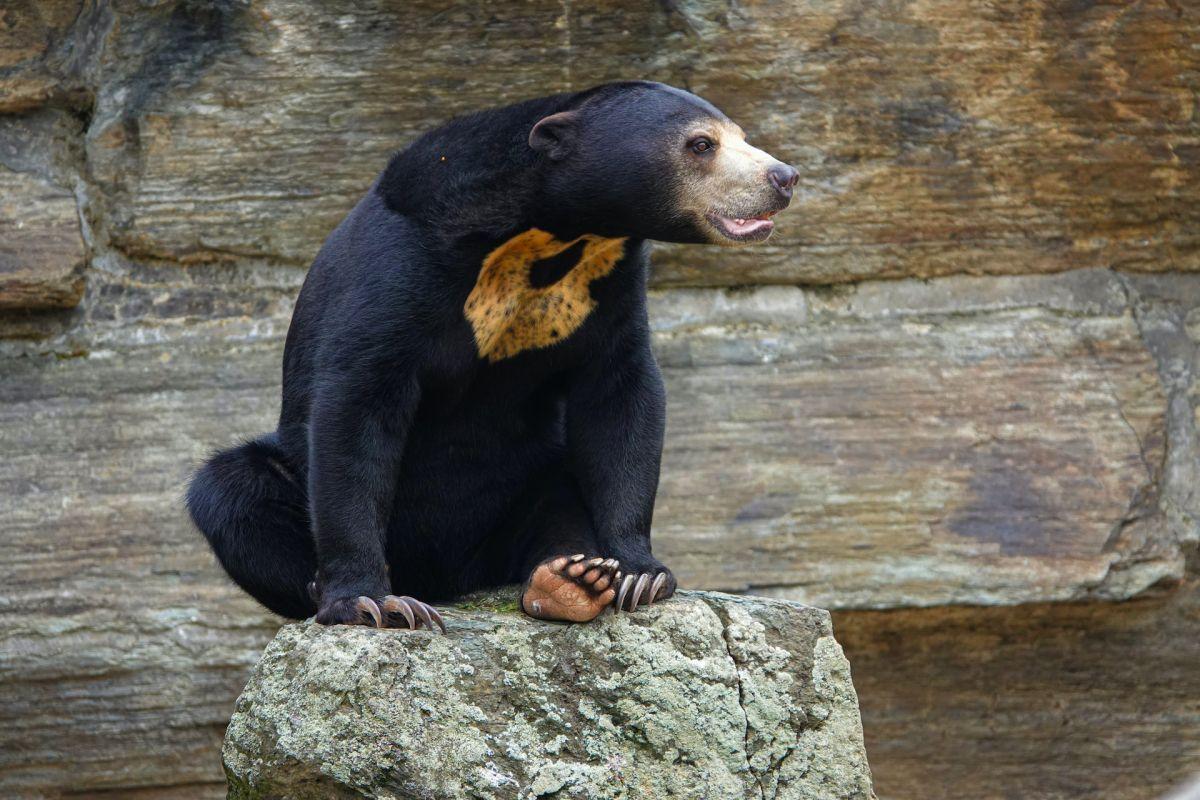
- Name: Sun bear
- Scientific name: Helarctos malayanus
- Conservation status:
The sun bear is a species of bear native to southeastern Asia. It is the smallest of all bears, as well as the most arboreal of them, usually sleeping or sunbathing in trees 2 to 7 m / 7 to 23 ft above the ground.
Considered vulnerable to extinction, its main threat in Myanmar and neighboring countries is the illegal bear bile trade, which is why it is heavily targeted by poachers.
7. Sunda flying lemur
- Name: Sunda flying lemur
- Scientific name: Galeopterus variegatus
- Conservation status:
The Sunda flying lemur, also known as the Sunda colugo, the Malayan colugo, or the Malayan flying lemur, is a species of colugo native to southeastern Asia, from southern Myanmar to Singapore and Indonesia.
Despite its name, it is neither a lemur nor it flies. Instead, it is a glider that can easily jump from branch to branch, and its diet is mainly made of leaves, flowers, shoots, and fruits.
8. Burmese hare
- Name: Burmese hare
- Scientific name: Lepus peguensis
- Conservation status:
The Burmese hare is a species of mammal native to Myanmar, Cambodia, Laos, Thailand, and Vietnam, and much of its range is within Myanmar, hence its name.
This hare is nocturnal and feeds on grasses, bark, and twigs. Every year, after a gestation period of about 37 days, 3 to 4 young are born, and they live for about 6 years. Despite being considered of least concern and having large numbers and wide distribution, the Burmese hare faces threats such as agricultural expansion and hunting for food.
9. Malayan tapir
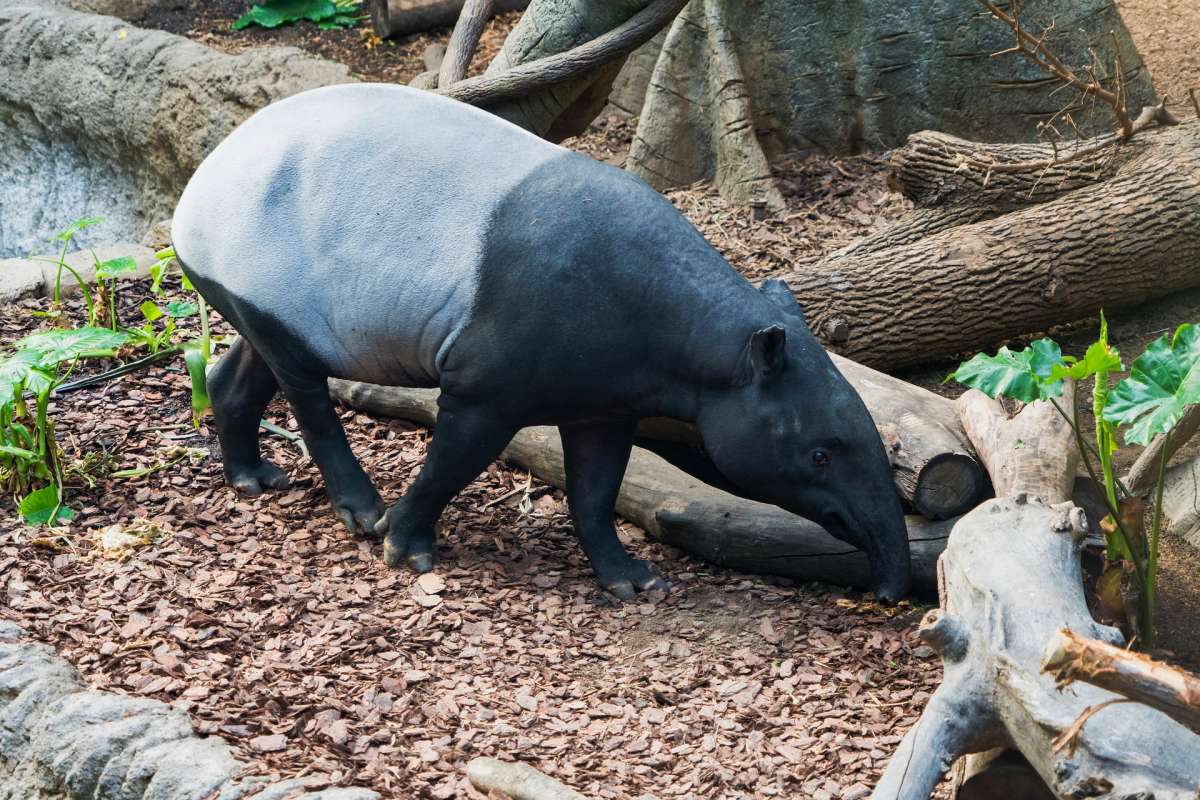
- Name: Malayan tapir
- Scientific name: Tapirus indicus
- Conservation status:
The Malayan tapir, also known as the Asiatic tapir, the Asian tapir, or the Indian tapir, is the only species of tapir native to southeastern Asia. It can be found from Sumatra to the Malay Peninsula, and parts of Myanmar.
With small, scattered populations and a fragmented range, this tapir is becoming rarer and rarer and is already listed as endangered. In Myanmar, it lives in tropical lowland rainforests, where it is a solitary animal feeding on grasses and shoots.
10. Sunda pangolin
- Name: Sunda pangolin
- Scientific name: Manis javanica
- Conservation status:
Pangolins are, as a group, some of the most endangered animals on the planet, and the Sunda pangolin is on the brink of extinction.
Also known as the Malayan pangolin or the Javan pangolin, this mammal can be found throughout several southeastern Asian countries, such as Myanmar, Thailand, and Indonesia. It spends most of its life in trees and is severely threatened by poaching for its meat, skin, and scales, although protected.
11. Bengal slow loris
- Name: Bengal slow loris
- Scientific name: Nycticebus bengalensis
- Conservation status:
The Bengal slow loris, also known as the northern slow loris, is a species of primate native to Indochina and the Indian subcontinent. Although relatively small, its range is the largest of all slow loris species. It lives in evergreen and semi-evergreen forests with dense canopies and is an important seed disperser and pollinator, which is why it must be protected at all costs.
Because Myanmar lost about 14 percent of its natural forest between 1999 and 2000, the Bengal slow loris severely declined in the country.
12. Myanmar snub-nosed monkey
- Name: Myanmar snub-nosed monkey
- Scientific name: Rhinopithecus strykeri
- Conservation status:
The Myanmar snub-nosed monkey, also known as the black snub-nosed monkey or the Burmese snub-nosed monkey, is a species of primate endemic to northern Myanmar. It was only discovered in 2010 and described in 2011, and was named after its entirely black fur.
Particularly rare and difficult to spot, it is most likely on the verge of extinction, and it is locally known to be a good indicator of rain, causing it to sneeze.
13. Asian elephant
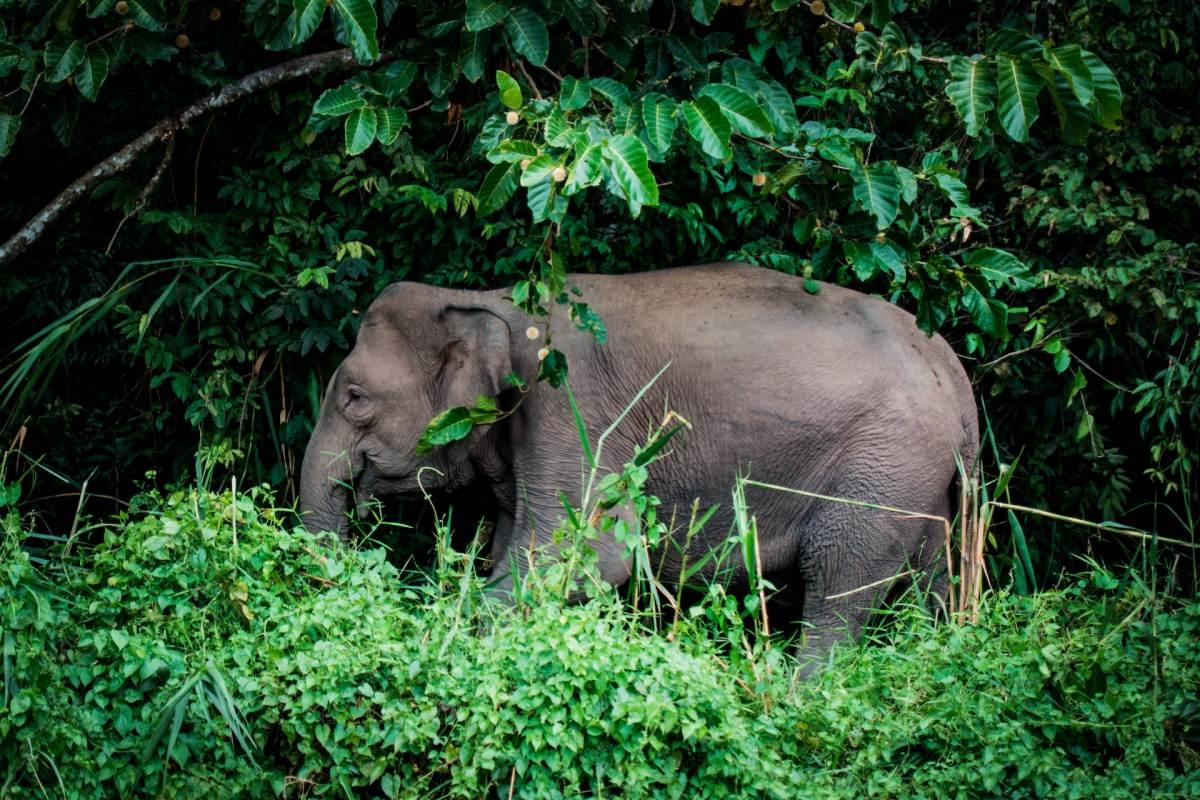
- Name: Asian elephant
- Scientific name: Elephas maximus
- Conservation status:
The Asian elephant is the only species of elephant living outside of Africa and is native to southern and southeastern Asia. Its range is much more fragmented than it used to be, and it is extirpated from southwestern Asia and the Arabian Peninsula.
Myanmar is the main source of elephant skin, as several dozens of animals are killed each year, and a serious poaching crisis has developed since the beginning of the 2010s.
14. Dugong

- Name: Dugong
- Scientific name: Dugong dugon
- Conservation status:
Although not mentioned yet, Myanmar has a very large, beautiful, and spectacular coastline of 1,930 km / 1,200 mi in the Indian Ocean, and is home to unique, fantastic creatures such as the dugong.
The dugong is a species of marine mammal related to manatees, and it can be found across 40 countries and territories of the Indo-West Pacific, from eastern Africa to northern Australia and Indonesia. It has been hunted for thousands of years for its oil and meat and is now listed as vulnerable to extinction.
15. Takin
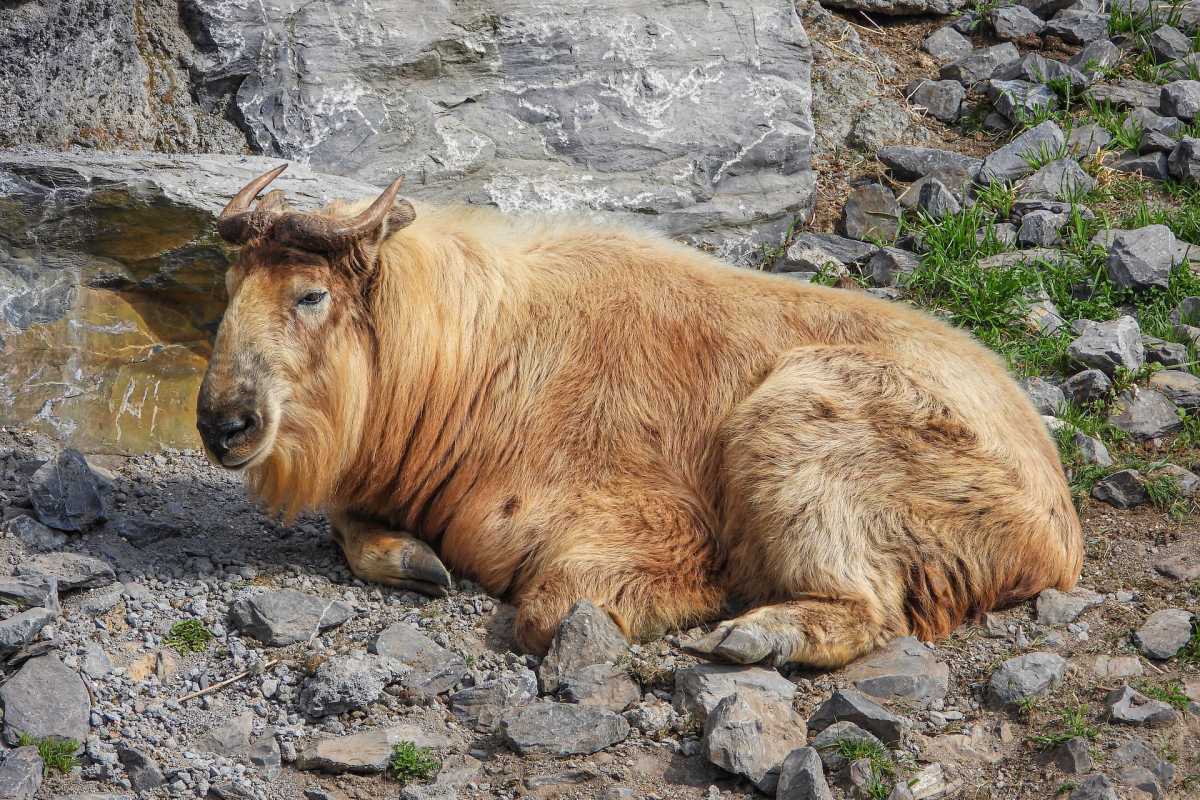
- Name: Takin
- Scientific name: Budorcas taxicolor
- Conservation status:
The takin, also known as the gnu goat or the cattle chamois, is a large species of ungulate native to the eastern parts of the Himalayas and the neighboring countries, including Myanmar.
In Myanmar, it is also heavily hunted, and its horns are often present in the illegal wildlife trade. In the span of 17 years, an extensive survey found a total of 89 sets of horns openly sold in the country.
16. Clouded leopard
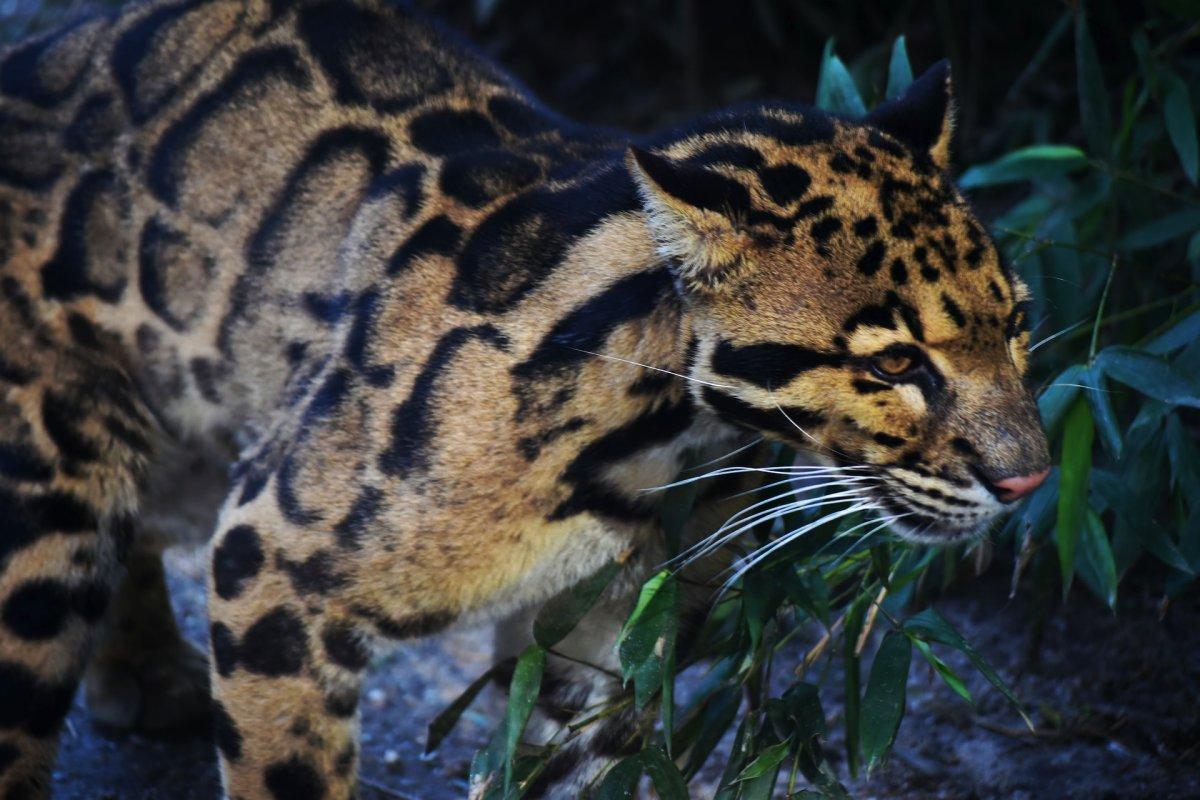
- Name: Clouded leopard
- Scientific name: Neofelis nebulosa
- Conservation status:
The clouded leopard, also known as the mainland clouded leopard, is a species of wild cat native to southern, eastern, and southeastern Asia. It gets its name from its unique, beautiful, and cloud-spotted coat, which is also its main threat: fewer than 10,000 mature individuals are left in the wild, mainly because they are poached for their skin.
In Myanmar, it can be found in the hill forests of Karen State, a southern state of the country.
17. Black eagle
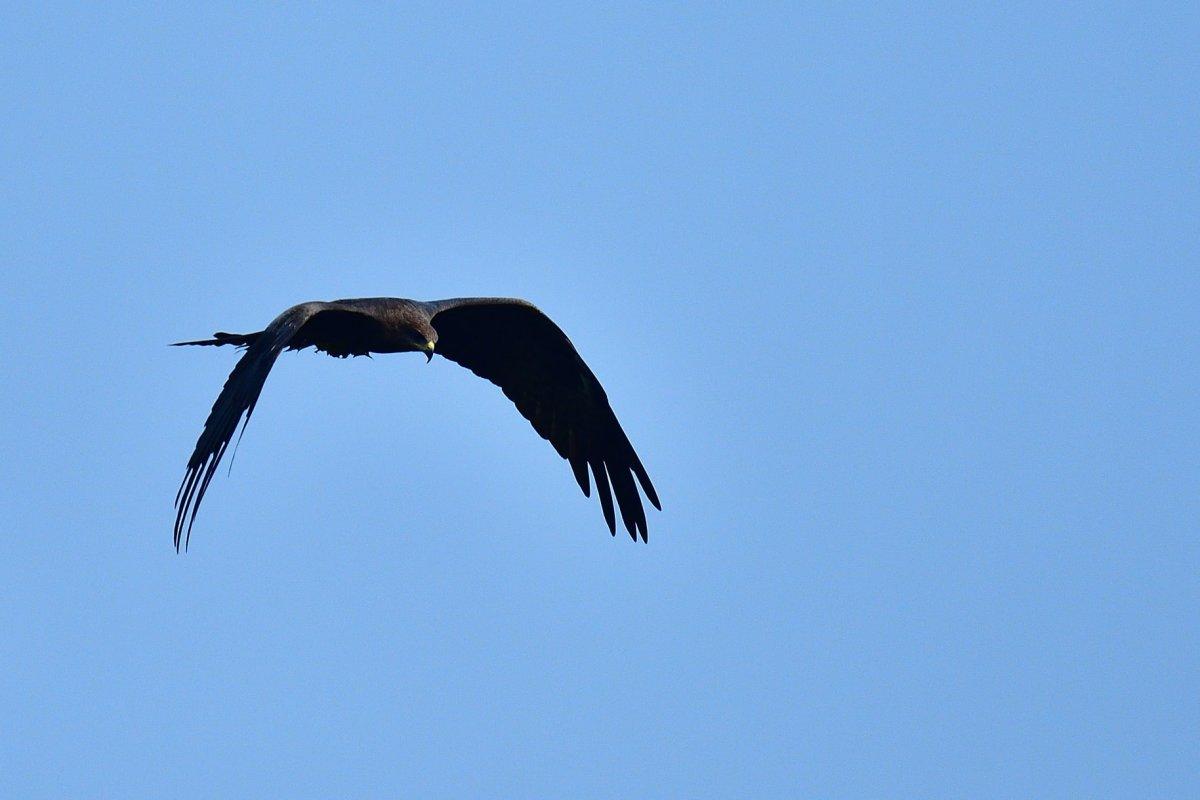
- Name: Black eagle
- Scientific name: Ictinaetus malaiensis
- Conservation status:
The black eagle is a large species of bird of prey native to southeastern China and Southeast Asia, and an important symbol in many countries, such as Germany, where it is seen as a noble, free, and powerful animal.
This eagle hunts mammals and birds, primarily in their nests, and is easily recognizable thanks to its fully black plumage, slow flight, and yellow ceres and legs. Although not particularly threatened, it is uncommon in most areas of its range.
18. Red-headed vulture
- Name: Red-headed vulture
- Scientific name: Sarcogyps calvus
- Conservation status:
The red-headed vulture, also known as the Pondicherry vulture, the Indian black vulture, or the Asian king vulture, is a species of Old World vulture that inhabits the Indian subcontinent, as well as some Southeast Asian countries such as Myanmar.
This vulture is on the brink of extinction, although it was uplisted from near threatened to least concern in 2004. The main reason for that is the use of diclofenac in veterinary medicine, which is extremely poisonous to all vultures, and caused rapid declines in lots of different species: after feeding on the carcass of a dead animal treated with diclofenac, the red-headed vulture will suffer from acute kidney failure and very quickly die.
—
So there you have them, these were my 18 wild animals in Myanmar. I hope you enjoyed this list and that you learned something new today.
In case you want to learn more about Myanmar wildlife, feel free to keep reading, as I still have lots of things to tell you about:
Endangered Animals of Myanmar
This is definitely the saddest part of the list, but it is essential to raise awareness. Because of this, let’s go through the list of endangered animals in Myanmar.
Here are the animals in danger of extinction in Myanmar.
- None
- Sunda pangolin
- Helmeted hornbill
- Elongated tortoise
- Big-headed turtle
- Sand tiger shark
- and 44 more…
- Eld’s deer
- Masked finfoot
- Malay tapir
- Irrawaddy dolphin
- Black marsh turtle
- and 99 more…
To see the full list of endangered species in Myanmar, head over to the International Union for Conservation of Nature’s Red List.
What is the National Animal of Myanmar?
The national animal of Myanmar is the green peafowl.
The green peafowl, also known as the Indonesian peafowl, is a species of peafowl native to southeastern Asia. Due to its relatively small range and the fragmentation of its habitat, it has been listed as endangered.
It can be found in the northern parts of Myanmar and has long been an important symbol of the country, as early as during the Burmese monarchs’ times, centuries ago. It was featured on the currency of independent Burma and used during British colonial times on the flag of the governor, as well as the naval ensign.
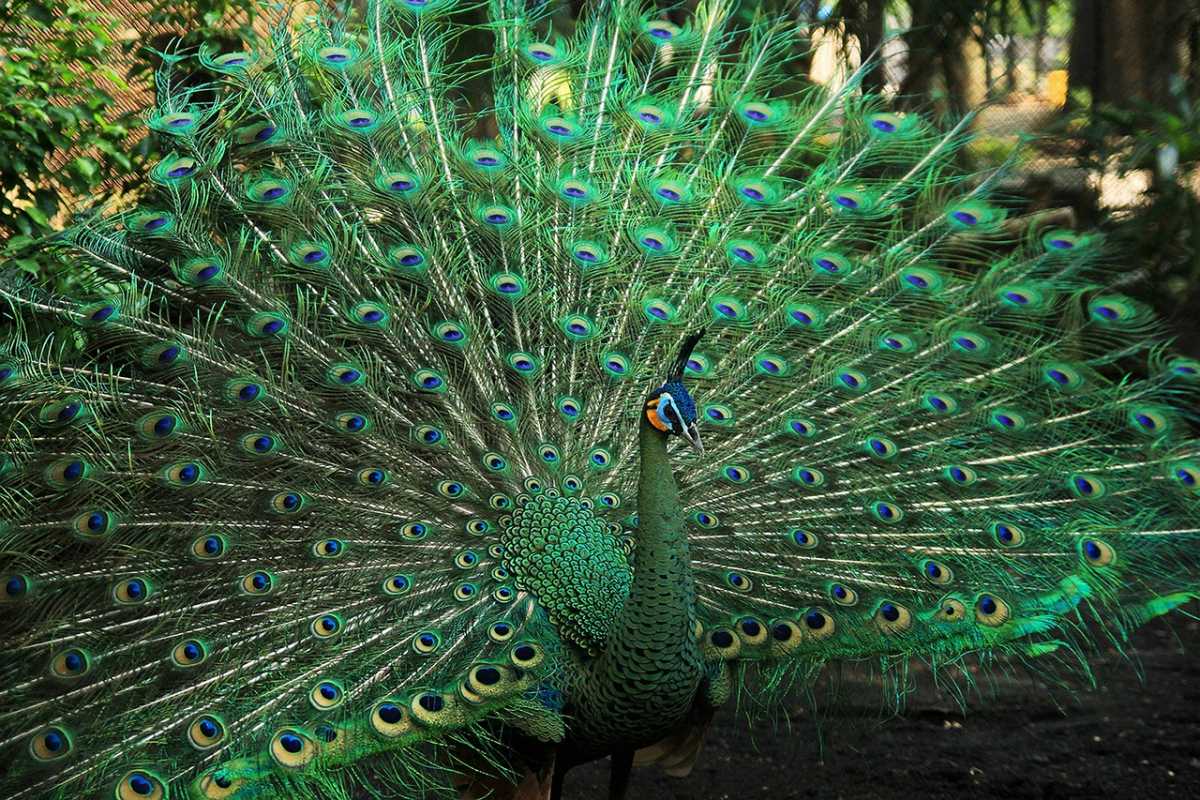
How Many Animals Native to Myanmar?
What is the diversity of native animals in Myanmar?
Let’s look at the total number of species of Chordata (mammals, birds, fishes, and reptiles).
Total number of animal species in Myanmar: 3,664 (15,319 in total in South and Southeast Asia)
Which animal is important in Myanmar?
Aside from the green peafowl, the main national symbol, the Indochinese tiger is of particular importance in Myanmar and the rest of Southeast Asia.
The Indochinese tiger is a subpopulation of the Asian tiger which can be found in very small areas of Myanmar, Thailand, and Laos. There are about 85 individuals in northwestern Myanmar, and 342 globally, and the largest population is located in southern Thailand.
What rare animals can we find in Myanmar?
There are many animals on the brink of extinction in southeastern Asia, and Myanmar is no exception to that.
Some of the rarest animals in the country are the Sumatran rhinoceros, the fish-eating crocodile, and the white-bellied heron. While most of them are protected, poaching, persecution, and habitat loss are often the main issues that they have to face, and they are all seriously menaced.
More About Animals in the World!
Loved these Myanmar animal facts? Want to see what animals live in other countries?
Then check out these posts:
Or click here to see ALL the facts up on the blog! Spoiler alert: there’s A LOT of them.
Share the knowledge! Click on the buttons below to share information about these famous animals in Myanmar with your friends, and help them learn more about the world 🙂
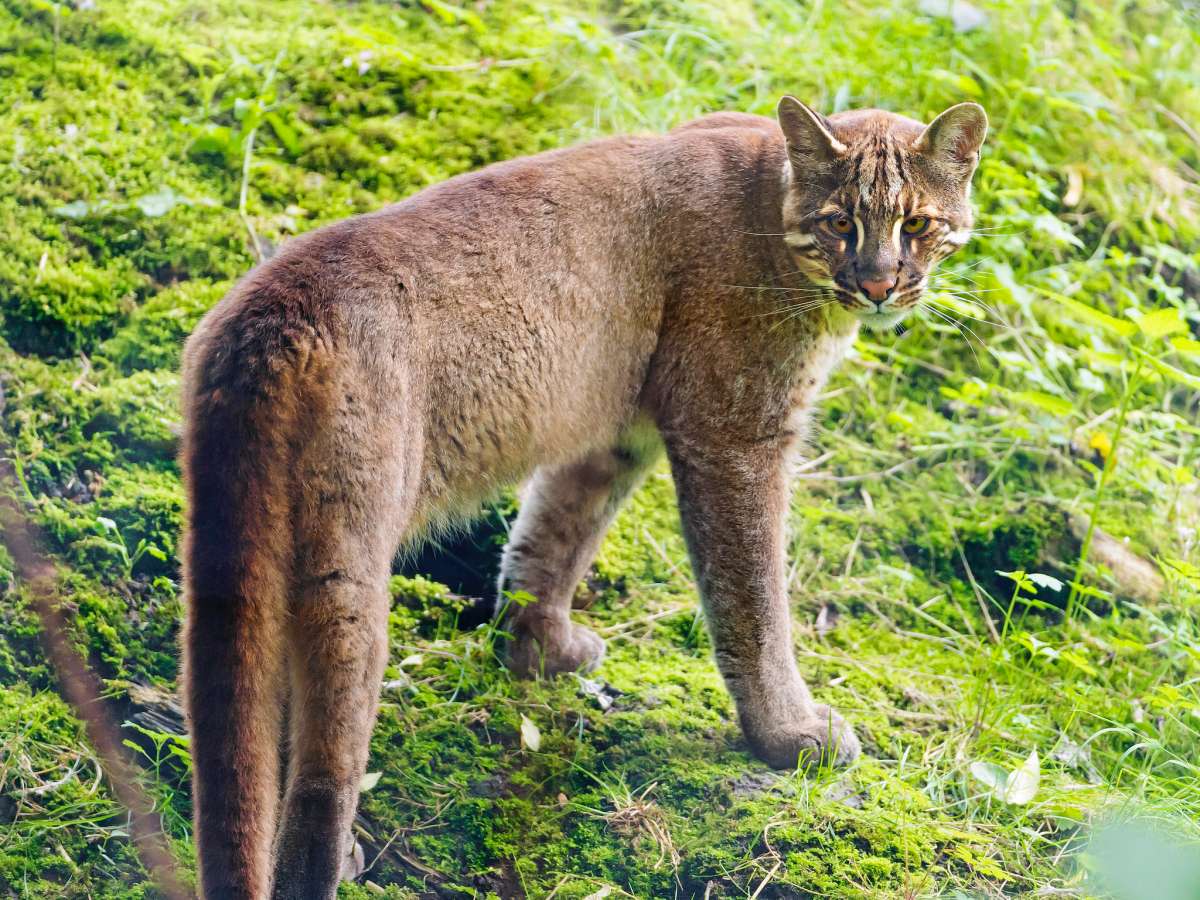
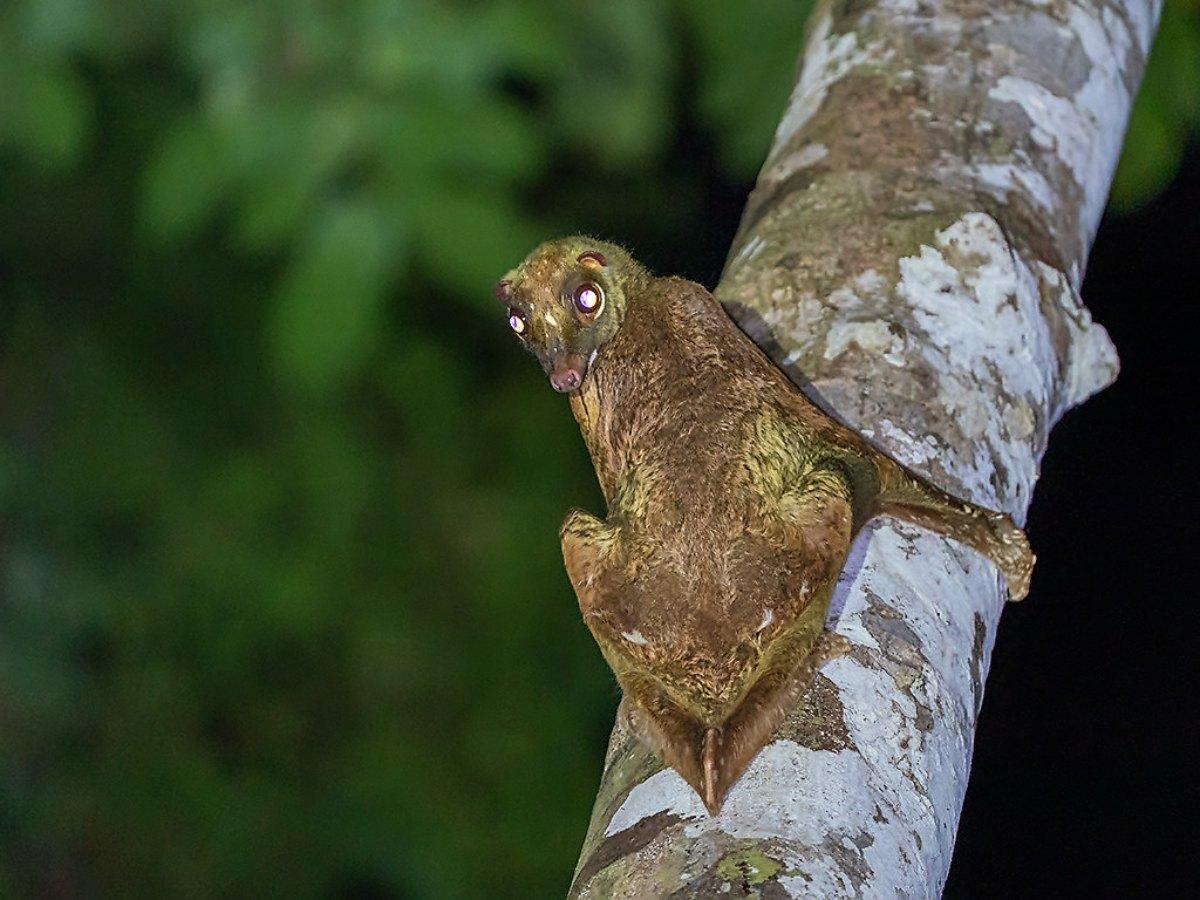
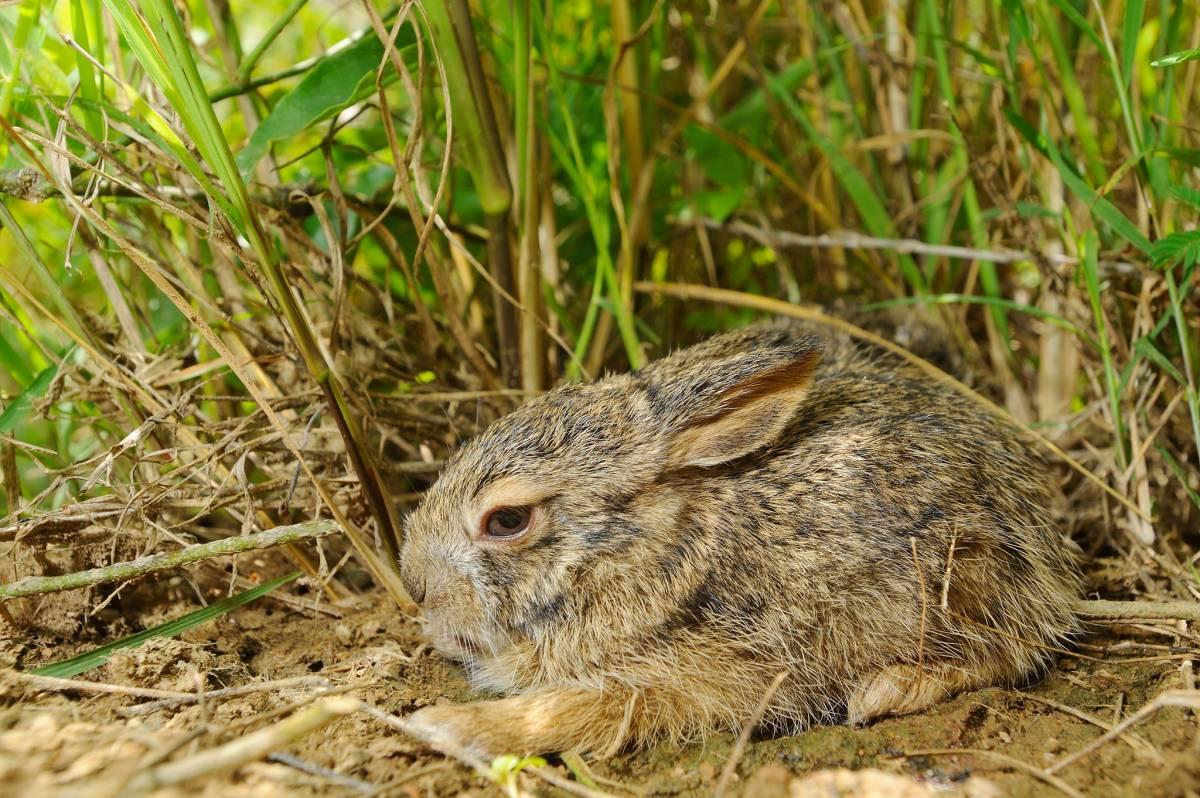
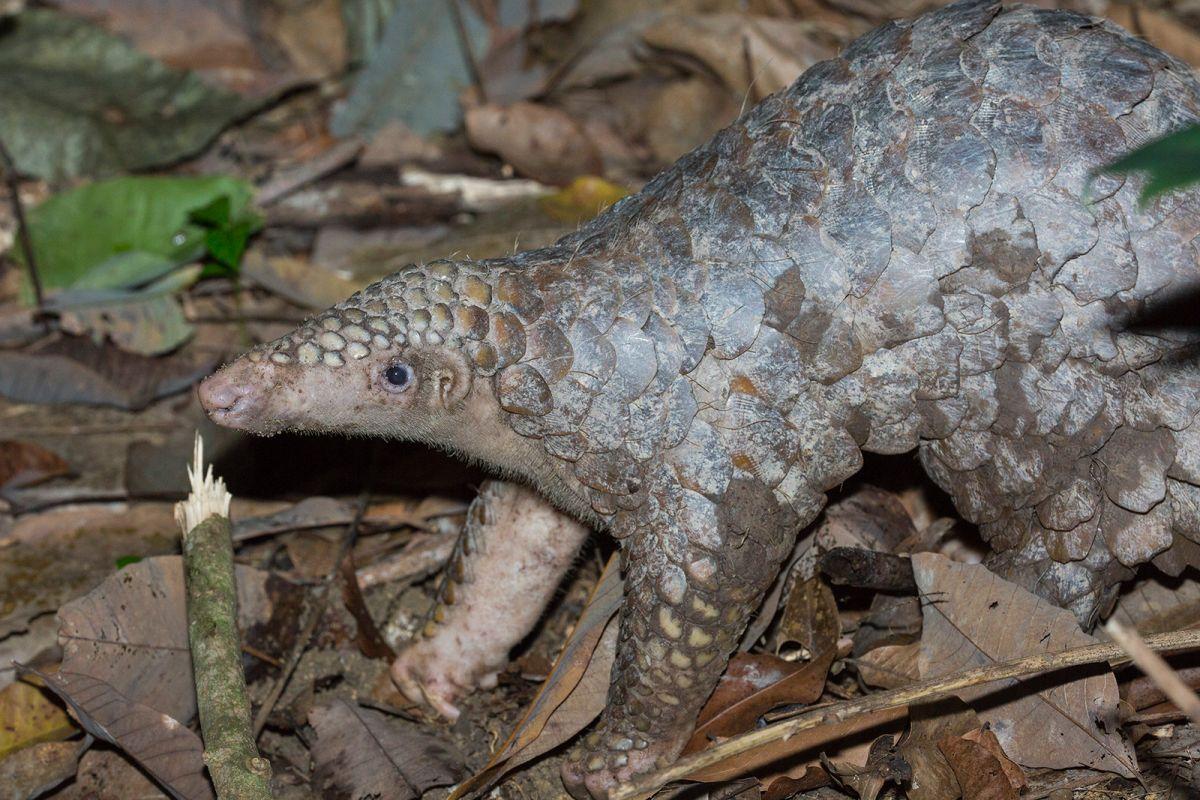
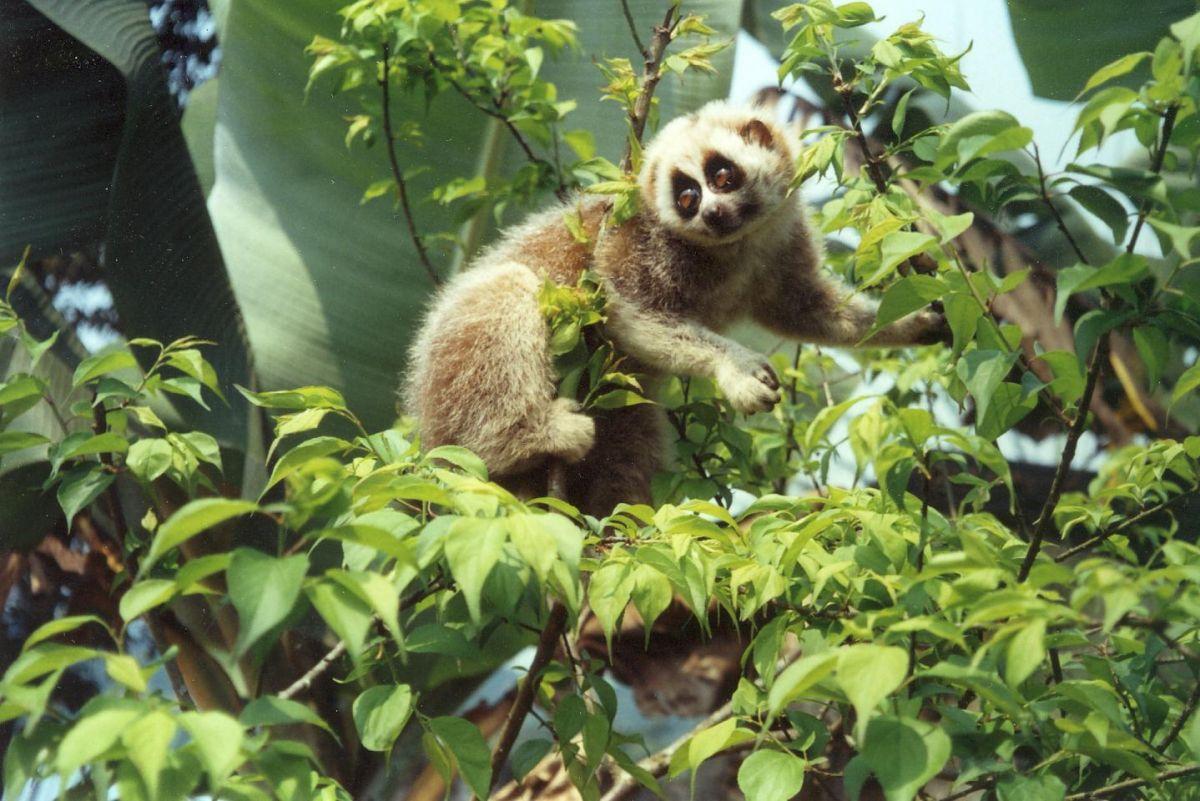
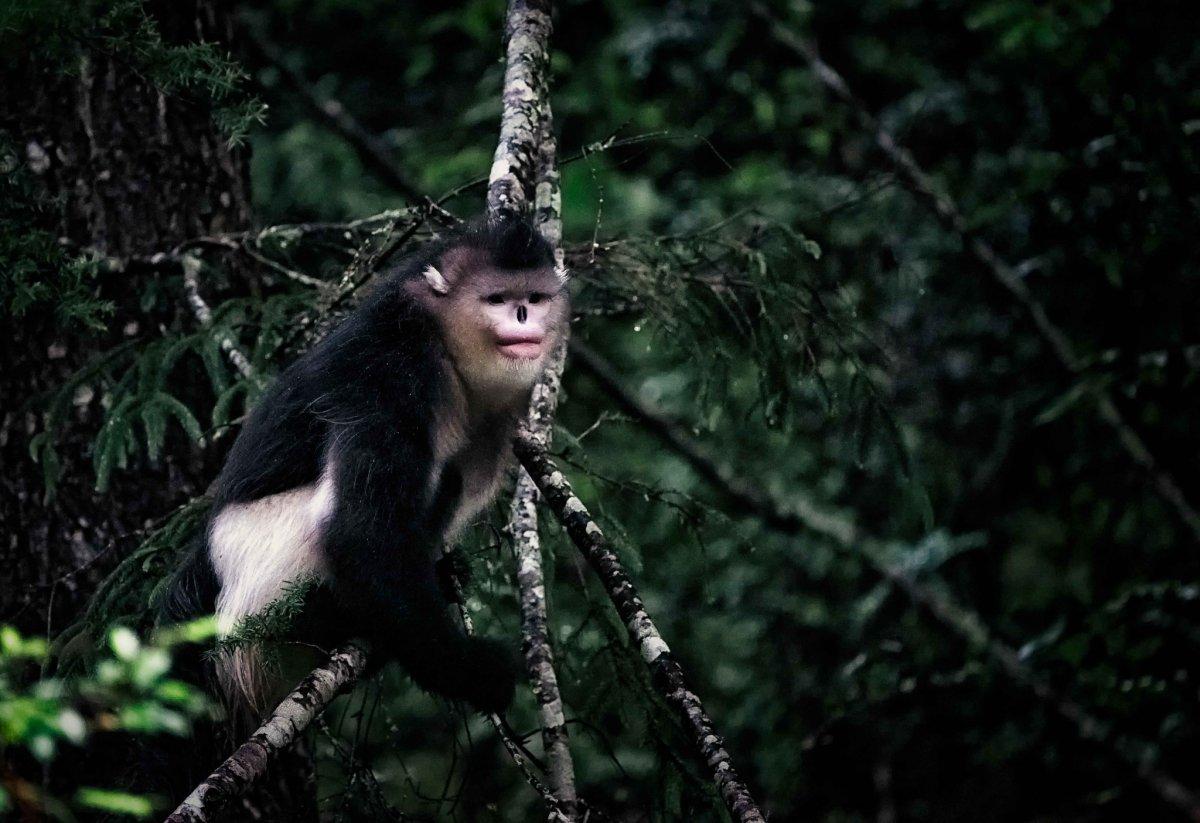
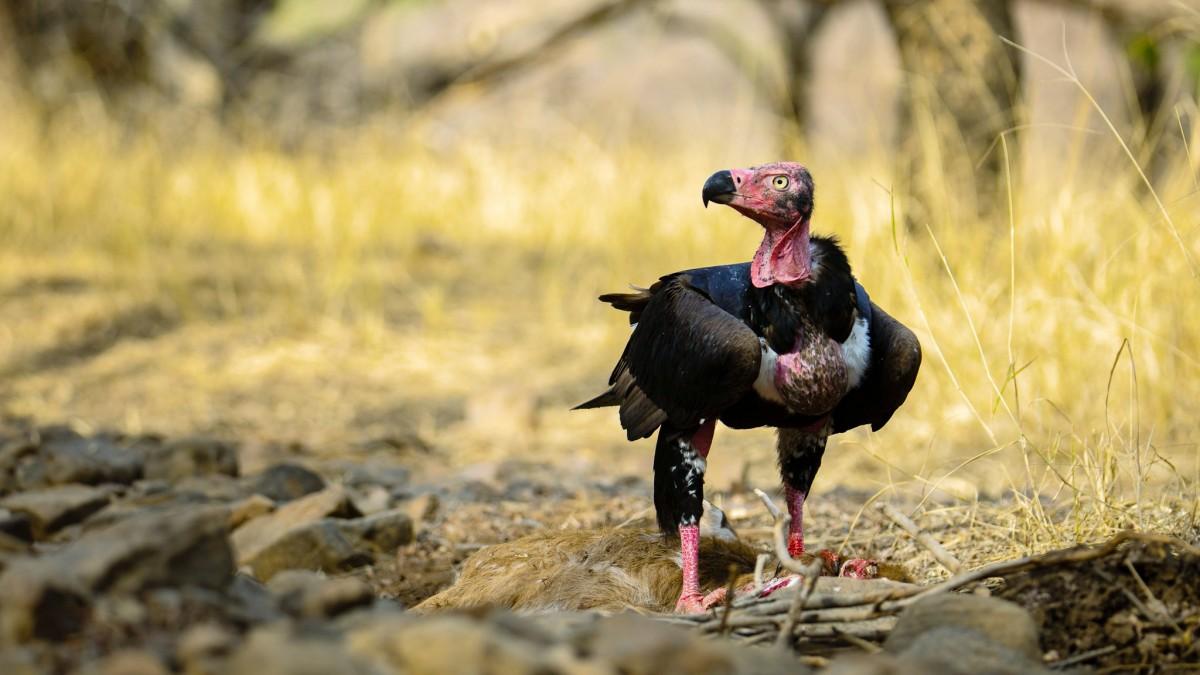

![10 Wild Animals in Micronesia [Wildlife in Micronesia]](https://www.kevmrc.com/wp-content/uploads/2023/01/10-wild-animals-in-micronesia.jpg)
![50 Wild Animals in India [Wildlife in India]](https://www.kevmrc.com/wp-content/uploads/2022/12/50-wild-animals-in-india.jpg)
![35 Wild Animals in China [Wildlife in China]](https://www.kevmrc.com/wp-content/uploads/2022/12/35-wild-animals-in-china.jpg)